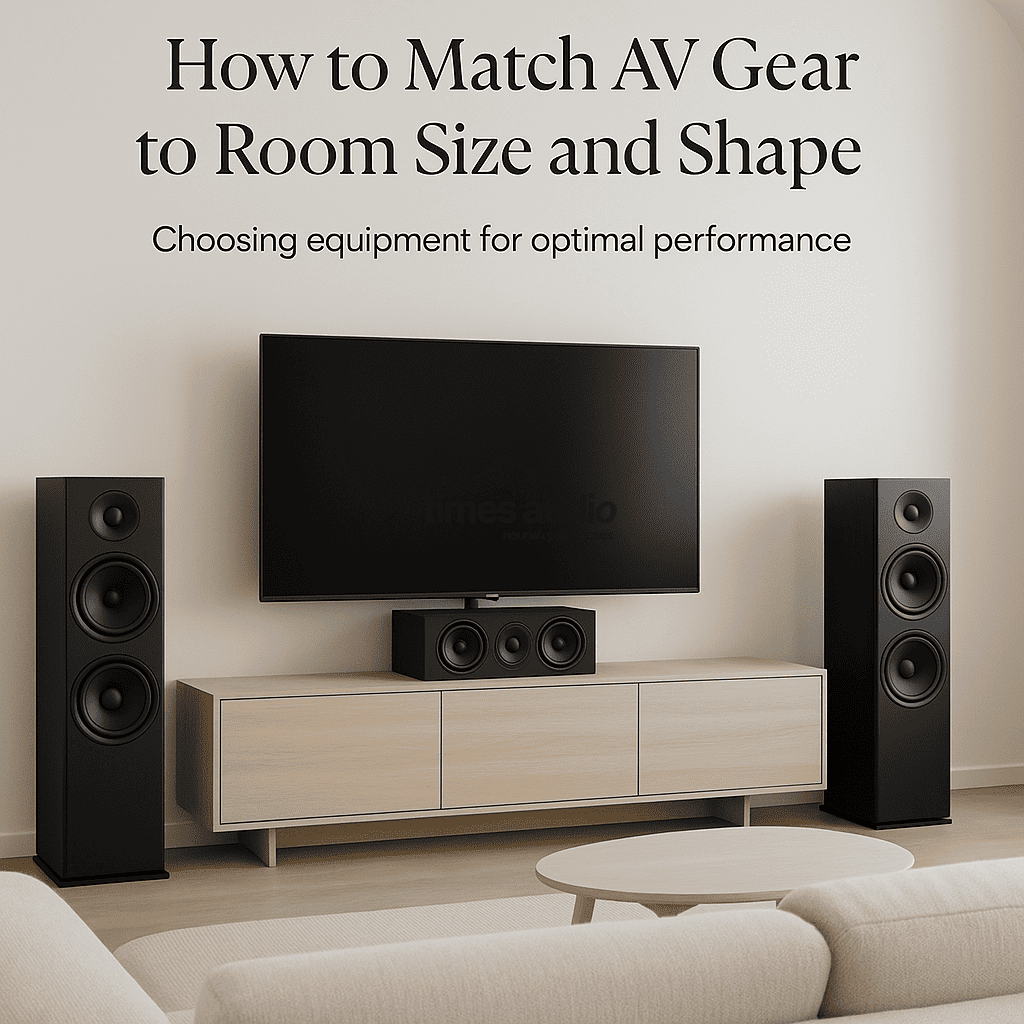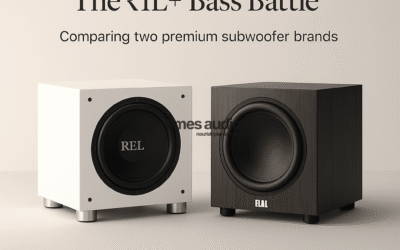When someone walks into Times Audio in Gurgaon — https://timesaudio.in — they’re not just browsing for another soundbar or plug-and-play speaker. They’re here for true cinematic and audio experiences, often for luxury homes, villas, or apartments in areas like DLF, South Delhi, Noida, and beyond.
And one of the most common — and critical — conversations we have is about matching AV gear to the size and shape of the room. Not just because it’s technical, but because it’s the difference between a system that just plays loud and a system that feels alive.
Let me walk you through what this actually means.
1. Bigger Room ≠ Bigger Speaker Always
It’s tempting to assume that a large room needs huge tower speakers. But it’s not just about size — it’s about dispersion, placement, and acoustic control.
For example, in a 500–700 sq. ft. home theatre in a DLF Phase 1 villa, we recently installed Bowers & Wilkins 700 Series floorstanders with Anthem amplification. Despite the size, we avoided going for larger models from the 800 Series. Why? The room had a lot of glass and stone. A more controlled, precise speaker gave much better results — especially once we factored in acoustic panels and placement strategy.
2. Small Rooms Need Smarter Choices, Not Smaller Sound
For a 250 sq. ft. den-turned-media-room in South Delhi, we went with Q Acoustics 3050i towers and a Marantz SR8015 receiver, combined with a REL T/7x subwoofer. The room didn’t need sheer output, but it did need clean dynamics and clarity at lower volumes.
Smaller rooms tend to exaggerate bass frequencies, so subwoofer calibration becomes critical. In this case, we spent almost an hour just positioning the REL and fine-tuning crossover and phase to ensure tight, non-boomy bass.
3. The Role of Shape and Surfaces
Square rooms with low ceilings or many reflective surfaces are often the most challenging. They create standing waves, slap echo, and localization issues. This is where Anthem Room Correction (ARC) makes a visible difference.
One of our Noida clients had a long and narrow media room with bare walls and tile flooring. We used Paradigm speakers paired with an Anthem MRX Series AVR, and after running ARC, the difference was night and day. Bass tightened up, dialogue clarity improved, and imaging became precise — all because the system was matched and calibrated to the room.
4. One Subwoofer? Maybe. Two? Often Better.
In rooms above 400 sq. ft., we often recommend dual subwoofers — for example, two REL HT/1205s or SVS SB-3000s, depending on the room acoustics. This isn’t about louder bass — it’s about even bass.
A single sub can sound boomy in one seat and dead in another. Two subs, properly placed, help smooth out the frequency response across all seats.
5. Budget Mismatch = Long-Term Disappointment
We don’t sell ₹1 lakh plug-and-play systems. That’s not what we do.
Our home theatre systems start at ₹10 lakh and above — excluding recliners and interiors. That’s because anything less usually can’t provide long-term satisfaction or immersive fidelity in larger or luxury spaces.
Think of it like this — you wouldn’t buy a luxury car and then install budget tyres on it. The same principle applies to audio-video.
6. Brands That Work Best for Different Spaces
Every brand has a character. Here’s what we often match based on room type:
- Q Acoustics: Great for smaller rooms. Smooth and forgiving.
- Dali: Bright and open — needs acoustic treatment to shine.
- Klipsch: High sensitivity. Works well in large rooms with a lot of space.
- REL & SVS: Subwoofer kings. Precision, power, and speed.
- Cambridge Audio: Warm, analog-like character. Lovely for music-first systems.
- Bowers & Wilkins: Premium all-rounder. Needs good amplification.
- Anthem & Marantz: Flexible, powerful AVRs with real room calibration features.
7. Involve Us Early
The best results happen when we’re involved during the planning or interior design phase. We can help you avoid common issues like speaker blockage, cable routing problems, or poorly chosen room dimensions.
Architects and interior designers working with us get seamless integration — without compromising aesthetics or performance.
Final Word
Matching AV systems to room size and shape isn’t about guessing. It’s about understanding acoustics, user habits, aesthetics, and expectations.
If you’re building a space and want it to sound as good as it looks — or if you’re an architect looking to integrate world-class AV — reach out. We’d love to show you what real sound feels like.
Visit https://timesaudio.in or drop by our Gurgaon studio.






